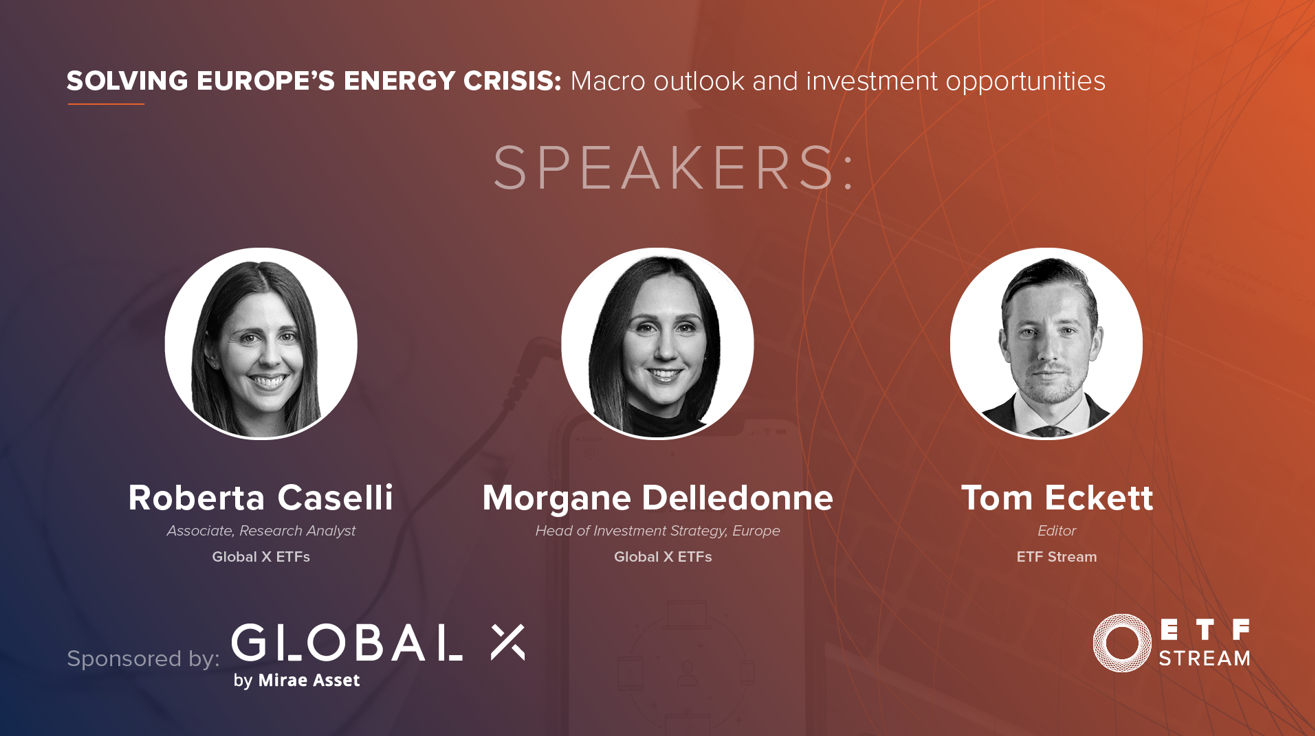The tailwinds driving huge flows into the clean energy sector, how to capture the energy transition through ETFs and the role of nuclear were all topics covered in ETF Stream’s recent webinar in partnership with Global X.
The discussion, titled Solving Europe’s energy crisis: Macro outlook and investment opportunities, started by analysing how technology and climate action are driving the disruption of the traditional energy sectors and helping to accelerate the transition to a carbon-neutral economy.
Looking at areas that are set to benefit, Morgane Delledonne, head of investment strategy for Europe at Global X, said: “I am particularly bullish in the long term for renewables that include wind and solar, but also clean transportation, electric vehicles, return batteries and fuel cells.
“Alternative sources of energy including green hydrogen or biofuels have opportunities going upstream, while clean energy infrastructures such as smart grids and battery storage will also see a tailwind. The entire ecosystem will be impacted by the transition.”
Other significant tailwinds include the ongoing energy crisis in Europe born out of the Russia-Ukraine conflict which is also playing out in global markets.
Additionally, government policy is also moving to support the energy transition, seen most recently in the US through the $374bn Inflation Reduction Act which aims to reduce carbon emissions by 40% by the end of the decade.
“As a result, the US solar market is expected to grow by 40% over the next five years,” Delledonne continued. “Climate change-related products have attracted the largest inflows in the US market year to date, about $1.3bn, and it is also the top mega-trend we are seeing in the European market.”
Clean energy ETFs saw a spike in performance following the announcement at the end of July, with solar ETFs leading the way.
Despite this, issues around the scarcity of materials and supply-chain autonomy will make the net zero target difficult to achieve.
Demand for rare materials including nickel, cobalt lithium and uranium will likely outstrip supply. Additionally, 80% of the production of raw earth materials comes from China, which in turn owns 40% of the strategic resources for the clean energy transition.
“Europe has already taken action to secure the value chain around electric vehicles and battery cells. There is currently lots of effort to become less dependent on China,” Delledonne said. “We have seen more cooperation between Germany and France about future sharing of energy resources.”
The role of nuclear
Tailwinds boosting the nuclear industry are similar to those facing the clean energy sector and with governments facing growing pressure to hit net zero, it is likely the sector’s role will grow.
Roberta Caselli, commodities research associate at Global X, said: “The energy crisis has led to a boost in energy mix in terms of sources and geographic exposures. Much of the focus has been on renewables but nuclear is becoming increasingly because it is clean, reliable and efficient.”
Countries are increasingly turning towards nuclear across the globe, even those that have been traditionally anti-nuclear such as Germany and Switzerland.
Furthermore, nuclear’s recent inclusion in the European Union’s ESG taxonomy has paved the way for increased investment into the area, despite fierce debates between members.
“The inclusion of nuclear in the European taxonomy is important to raise private capital investments and ETFs are a cost-effective way of doing that,” Caselli said.
Delledonne added it is important to consider the wider uranium industry when investing due to the long-term scalability goals of the industry, meaning the demand for components involved in their construction is likely to be higher.
“It is important to look at the entire supply chain and the ecosystem because we are still in the development stage. The infrastructure around the uranium and nuclear industry is key consideration when investing in the space,” she said.
“It is still a sector that is innovating. In terms of the adoption of nuclear, we are still early in the game and from an investment standpoint it is a growth play.”
To watch the full webinar, click here.
Related articles



